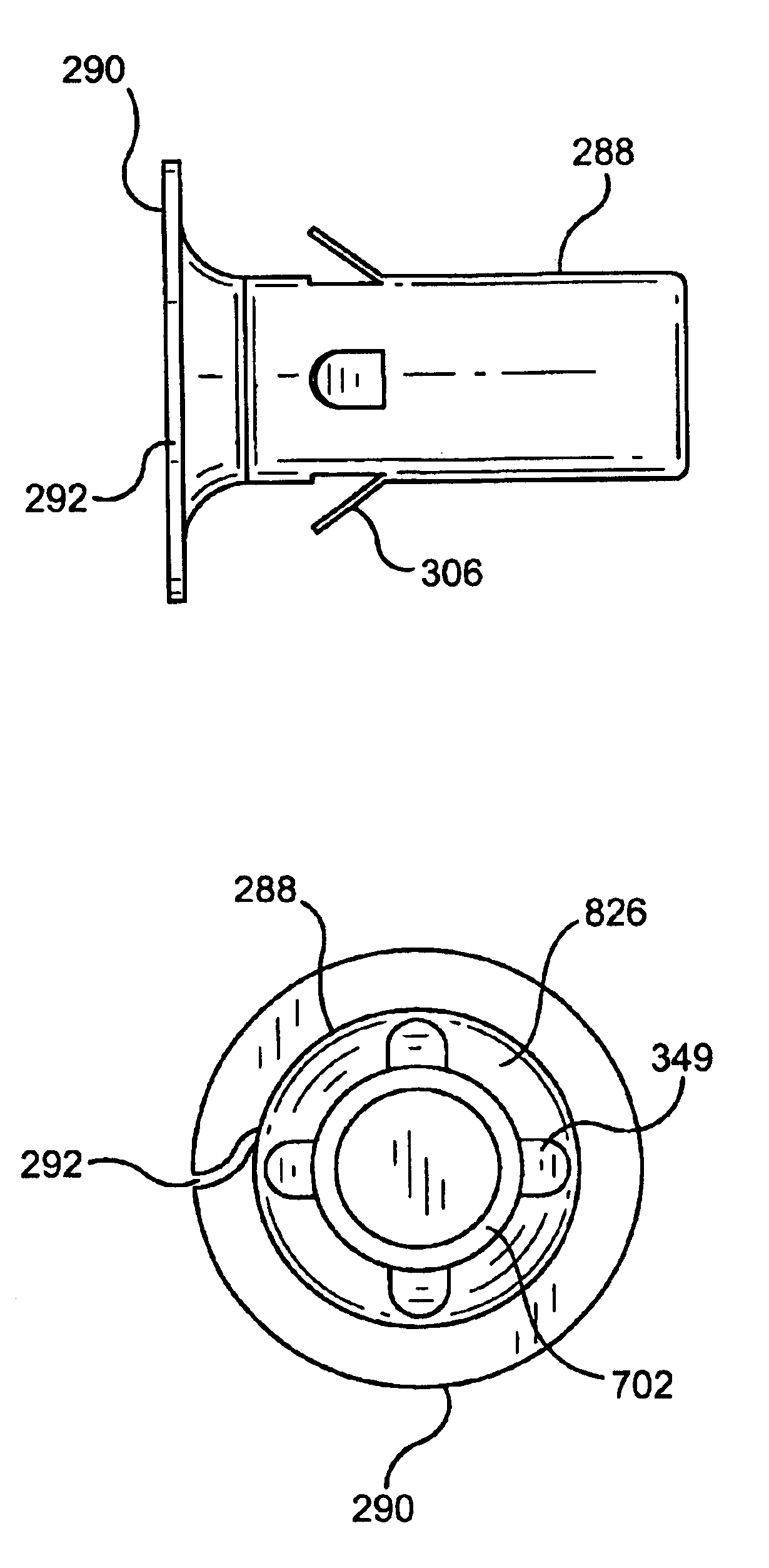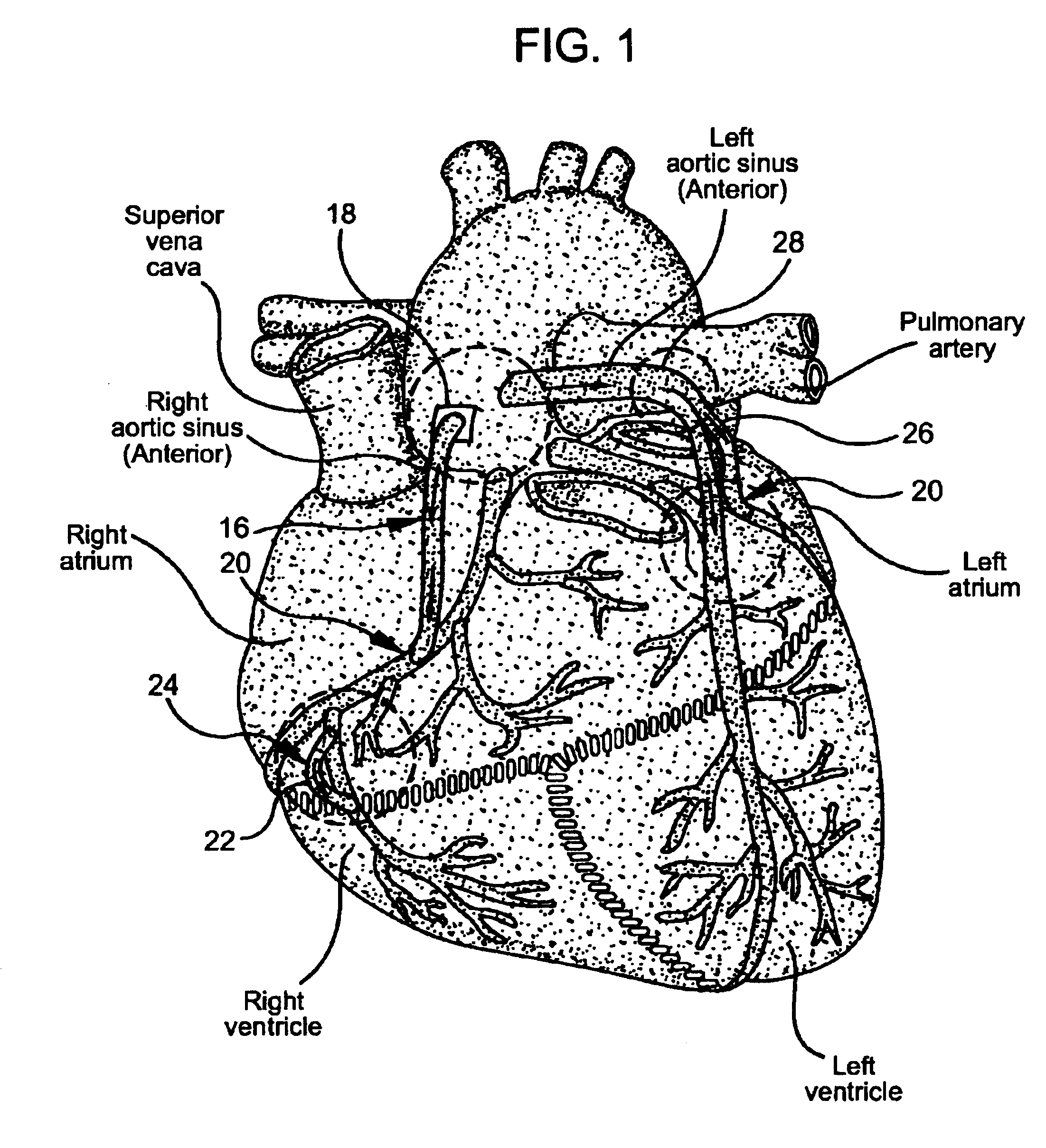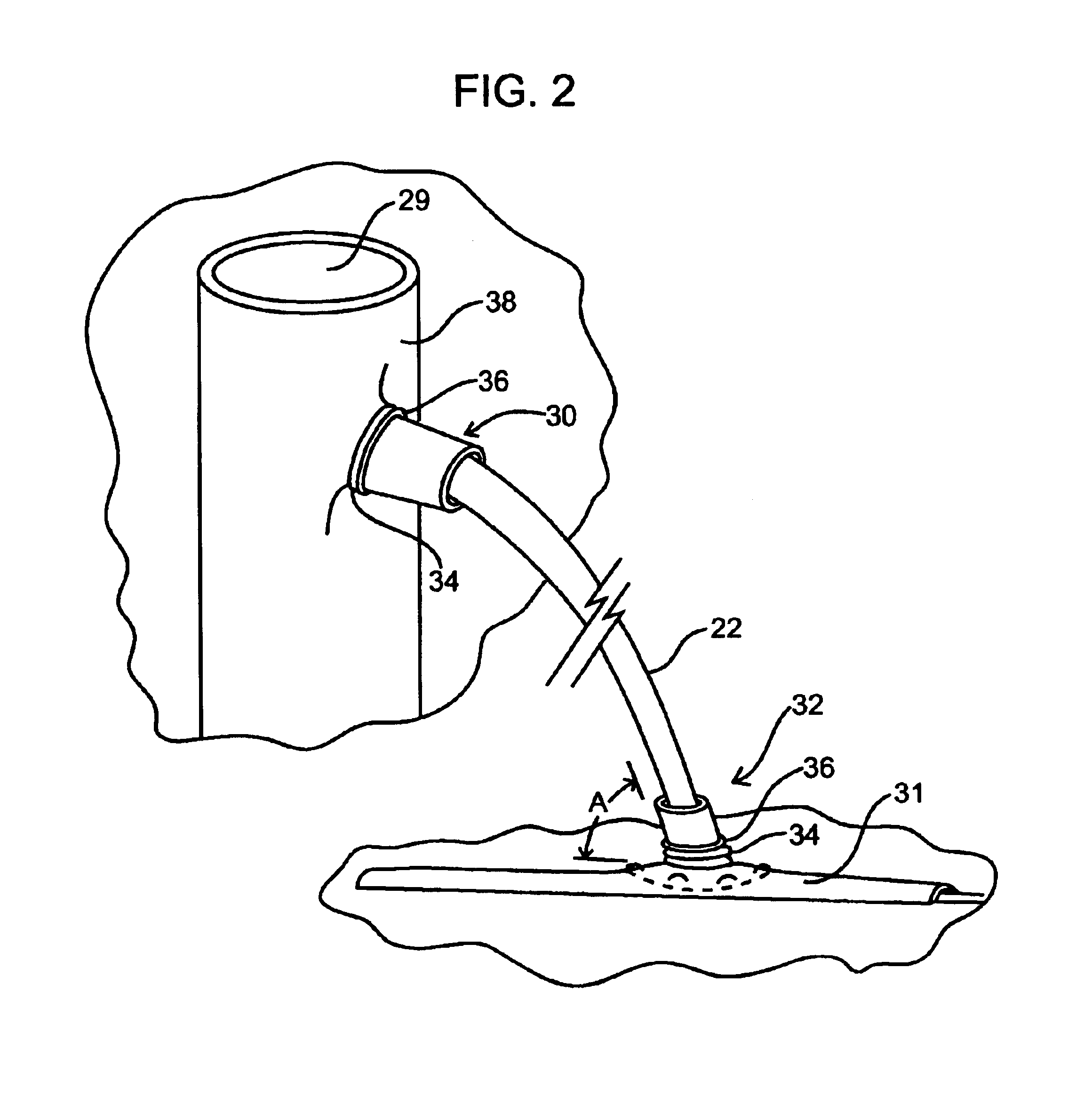Sutureless anastomosis systems
an anastomosis system, sutureless technology, applied in the field of sutureless anastomosis system, can solve the problems of host vessel, significant time and complexity for stabilizers and retractors, tissue infarction,
- Summary
- Abstract
- Description
- Claims
- Application Information
AI Technical Summary
Benefits of technology
Problems solved by technology
Method used
Image
Examples
Embodiment Construction
The fittings and delivery systems of the invention are intended to produce anastomoses between bypass grafts and host vessels to treat vascular abnormalities such as stenoses, thromboses, other occlusions, aneurysms, fistulas, or other indications requiring a bypass graft. The systems of the invention are useful in bypassing stented vessels that have restenosed. Current approaches for treating stenosed stents have not been successful at safely and reliably removing the lesion and opening the vessel lumen. Therefore the approach described by this invention, which produces a blood flow conduit around the stented lesion, mitigates concerns associated with damaging the stent or forming emboli while removing deposits attached to the stent. The fittings are also intended to secure and support the ends of transected vessels such as those cut during organ transplantations. The embodiments of the invention also provide mechanisms to secure branching vessels to a replacement graft during surg...
PUM
 Login to View More
Login to View More Abstract
Description
Claims
Application Information
 Login to View More
Login to View More - R&D
- Intellectual Property
- Life Sciences
- Materials
- Tech Scout
- Unparalleled Data Quality
- Higher Quality Content
- 60% Fewer Hallucinations
Browse by: Latest US Patents, China's latest patents, Technical Efficacy Thesaurus, Application Domain, Technology Topic, Popular Technical Reports.
© 2025 PatSnap. All rights reserved.Legal|Privacy policy|Modern Slavery Act Transparency Statement|Sitemap|About US| Contact US: help@patsnap.com



